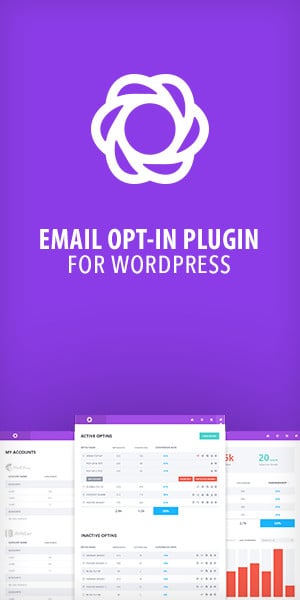Using keywords for on-page SEO is crucial for improving search engine rankings. Mastering effective placement can significantly boost organic traffic, with studies showing that 95% of web traffic is captured by sites on the first page of search results. This introduction will explore various on-page SEO strategies, including optimal keyword placement, density, and related semantic words to enhance site visibility. Diving deep into these techniques will uncover how to align content efficiently with search algorithms, making it more compelling for both search engines and users.
Understanding the Role of Keywords in On-Page SEO
Keywords are the backbone of on-page SEO, shaping how content is discovered by search engines. They guide both users and algorithms to your page, making them indispensable in any SEO strategy. Comprehending their role and harnessing their potential can significantly impact visibility and engagement.
What Are Keywords and Why Are They Important?
Keywords are specific words or phrases that encapsulate the main topics of your content. They act as connectors between what people are searching for and the content you provide. When integrated effectively, keywords help search engines understand your content’s relevance to users’ queries.
- Connect Users to Content: Keywords direct users to relevant content, ensuring they find what they’re looking for.
- Enhance Search Engine Visibility: Proper keyword usage increases a page’s chances of ranking higher in search engine results.
- Drive Targeted Traffic: Through strategic keyword implementation, websites can attract visitors who are actively seeking the information or services provided.
Using the right keywords ensures your content resonates with your audience’s needs. It’s not just about getting traffic but attracting the right audience that fits your niche.
Different Types of Keywords in SEO
Understanding the various types of keywords can significantly enhance your SEO efforts. Each type serves a unique purpose and can be used strategically to improve visibility and relevance.
- Short-tail Keywords: These are generally one or two words, like “shoes.” They have high search volume but are less specific.
- Long-tail Keywords: Phrases with three or more words, such as “best running shoes for beginners,” offer more specificity with less competition.
- LSI Keywords (Latent Semantic Indexing): These are conceptually related terms that help search engines understand content context.
- Branded Keywords: Include brand names or variations, crucial for businesses looking to build brand recognition.
Employing a mix of these keywords can optimize content for different user intents, providing a well-rounded approach to SEO.
Identifying High-Impact Keywords for Your Content
Selecting the right keywords involves more than intuition; it requires analysis and strategy. High-impact keywords are those that not only attract traffic but also align with your business objectives.
- Research and Analyze: Use tools like Google Keyword Planner and SEMrush to discover keywords that are relevant and have a good search volume.
- Understand User Intent: Identify what your audience is searching for and tailor your keywords to match these needs.
- Assess Competition: Analyze competitors to see what keywords they’re ranking for. This can uncover opportunities for differentiation.
- Focus on Relevance: Ensure that the keywords chosen are directly related to your content’s theme and your business goals.
By focusing on these aspects, you can identify keywords that will not only draw visitors but also convert them into customers or loyal followers.
Best Practices for Implementing Keywords on Your Page
Implementing keywords effectively is key to maximizing their potential. It’s not just about stuffing them into text but placing them where they naturally fit and provide the most value. This section will guide you through strategies to make your keywords work for you.
Strategically Placing Keywords in Content
Strategic placement of keywords enhances readability and ensures search engines can effectively index your page. Here’s how to do it:
- Incorporate in Headings: Use keywords in H2 and H3 tags to emphasize main points.
- First 100 Words: Place primary keywords early in the text to establish context.
- Natural Flow: Integrate keywords seamlessly into sentences to enhance readability.
- Anchor Text: Use keywords in hyperlinks to improve internal linking and relevancy signals.
Remember, keyword placement should feel natural and enhance the reader’s experience, not disrupt it.
How to Optimize Title Tags and Meta Descriptions
Title tags and meta descriptions are crucial elements of on-page SEO. They are the first impression users get of your page in search results.
- Include Primary Keywords: Ensure primary keywords appear in the title tag and meta description.
- Maintain Length Limits: Keep title tags under 60 characters and meta descriptions under 160 characters.
- Create Compelling Language: Write engaging descriptions that entice clicks and convey the page’s value.
Optimizing these elements is vital for improving click-through rates and search engine rankings.
Importance of URL Structures and Keyword Integration
The structure of a URL can influence search engine rankings and user trust. Integrating keywords into URLs enhances both usability and SEO.
- Keep URLs Short: A concise URL is more readable and easier to share.
- Use Hyphens: Separate words with hyphens for better readability.
- Include Important Keywords: Place primary keywords in the URL to signal relevance.
- Avoid Unnecessary Parameters: Keep URLs clean and straightforward.
An optimized URL structure can make your page more appealing to both search engines and users, contributing to higher rankings and better user experience.
Analyzing and Refining Your Keyword Strategy
SEO is a dynamic field, and keyword strategies need regular analysis and refinement. By continuously evaluating performance and adapting to changes, you can maintain and improve your search engine rankings.
Tools for Tracking Keyword Performance
There are various tools available to help track how your keywords are performing. These tools provide insights into your rankings, traffic, and opportunities for growth.
- Google Analytics: Offers data on traffic sources and user behavior related to your keywords.
- SEMrush: Provides detailed reports on keyword positions and organic search performance.
- Ahrefs: Offers insights into backlinks and keyword rankings, helping identify growth opportunities.
These tools can significantly aid in understanding how well your keywords are performing and what adjustments may be needed.
Evaluating Keyword Density and Avoiding Overuse
Keyword density refers to the percentage of times a keyword appears in your content. Maintaining an optimal density is crucial to avoid penalties from search engines for “keyword stuffing.”
- Aim for Natural Density: Keep keyword density between 1-2% to ensure natural language flow.
- Use Variations: Incorporate synonyms and related terms to diversify language and avoid repetition.
- Focus on Content Quality: High-quality, informative content will naturally incorporate keywords effectively.
Avoiding overuse ensures a better user experience and compliance with search engine guidelines.
Adjusting Your Approach Based on Analytics and Trends
The digital landscape is constantly evolving, and staying updated with analytics and trends is essential for a successful keyword strategy.
- Monitor Performance: Regularly review analytics to see how your keywords are performing.
- Adapt to Changes: Stay informed about algorithm updates and adjust strategies accordingly.
- Leverage Trends: Use trending topics and seasonal trends to inform keyword choices and content creation.
- Test and Iterate: Experiment with different keywords and monitor outcomes to refine your strategy.
By being proactive and adaptable, you can ensure your keyword strategy remains effective and responsive to changes in the digital environment.
Conclusion
The article outlines the significance of keywords in on-page SEO, explaining their role and types, and how to identify high-impact keywords. It emphasizes best practices for using keywords, including strategic placement in content and optimizing title tags, meta descriptions, and URLs. It discusses analyzing and refining keyword strategy through tools for tracking performance and evaluating keyword density to prevent overuse. The importance of adjusting strategies based on analytics and trends is highlighted to maintain effective SEO practices. The article educates on integrating keywords effectively to boost search engine rankings.
FAQ
What is the best way to choose keywords for on-page SEO?
Select keywords that align with your target audience’s search intent. Use keyword research tools to analyze search volume, competition, and relevance. Focus on long-tail keywords for better targeting and conversion.
How do keywords affect on-page SEO ranking?
Keywords help search engines understand your content’s topic and relevance. Proper keyword placement in titles, headings, and body text increases visibility and rankings. They bridge the gap between user queries and your content.
What are the common mistakes to avoid when using keywords in on-page SEO?
Avoid keyword stuffing, which can lead to penalties. Ensure keywords fit naturally within content. Ignoring user intent and not updating keywords based on search trends can hinder performance.
How does keyword density influence on-page SEO performance?
Keyword density reflects how often a keyword appears relative to the total word count. Maintain a natural flow and tone. Overuse can harm readability and ranking, so prioritize user experience.
Why is keyword research important for on-page SEO optimization?
Keyword research identifies terms your audience uses, guiding content creation and strategy. It boosts relevance, ensuring content meets search intent and attracts organic traffic.
What tools can help in finding the right keywords for on-page SEO?
Tools like Google Keyword Planner, SEMrush, and Ahrefs provide insights into keyword performance and competition. These resources help refine your strategy and discover valuable keyword opportunities.




